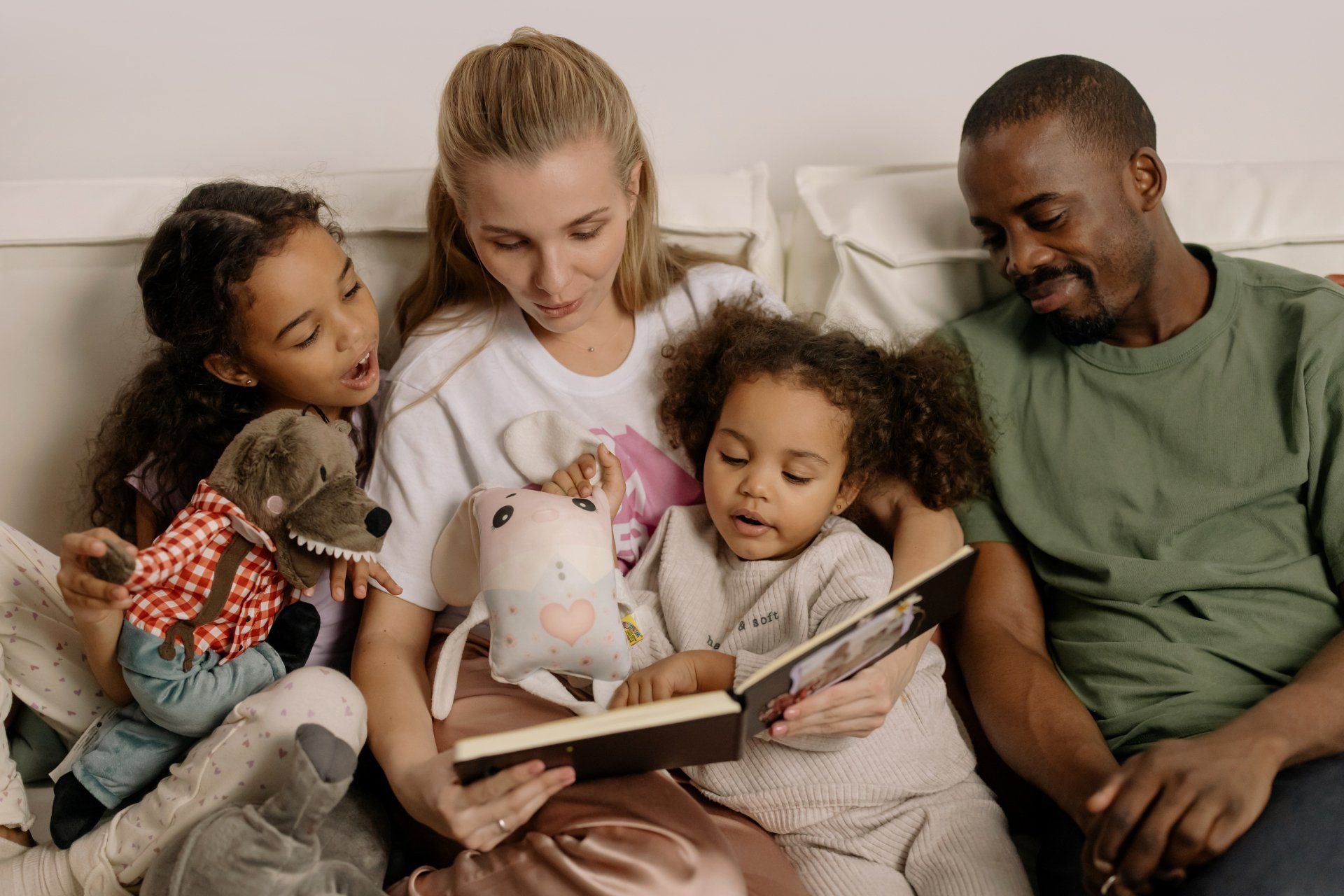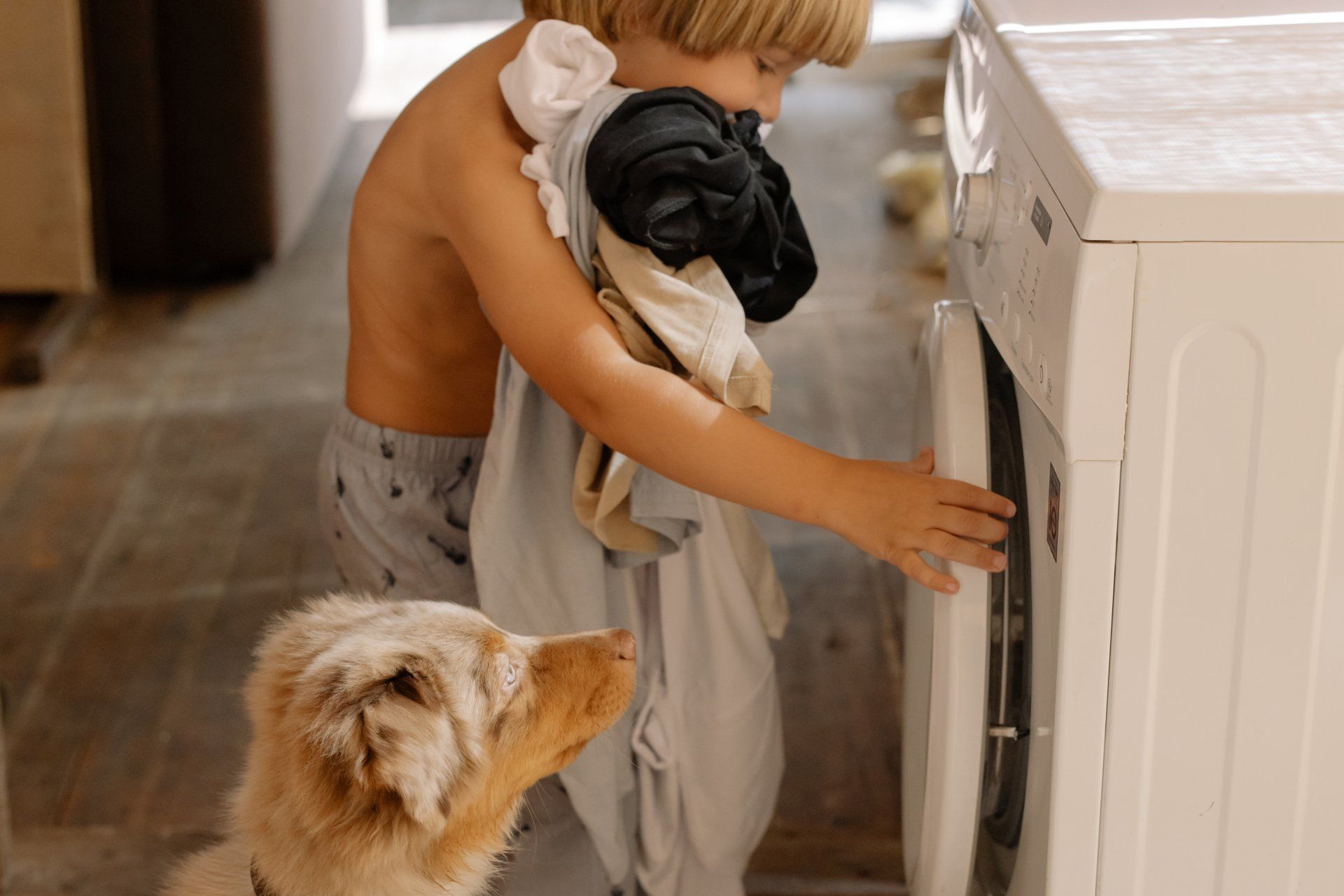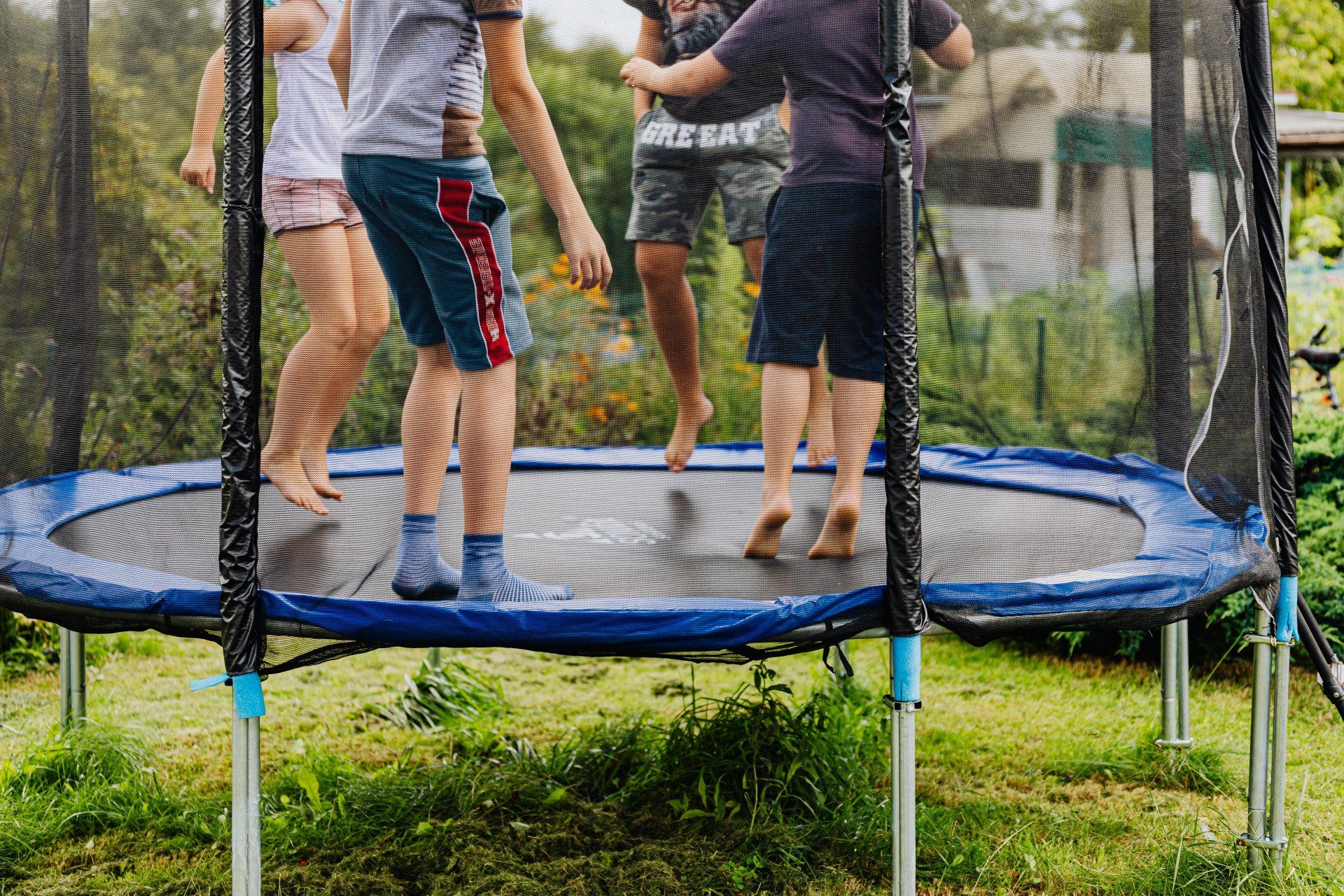Embracing Meaningful Connections: Activities that Complement ABA Therapy
Summer is in full swing and that often means changes to schedules and more opportunities to bond with your child and share new experiences with them.
We’re opening our book of ideas for the various age groups we work with. As you’re deciding which activities are most appropriate consider reaching out to your care team to tailor activities to the needs of your child and family.
Many activities complement therapy your child receives!
The end goal with ABA therapy is of course mastery and graduation from services, when planning your activities consider how the following points can enhance progress:
- Individualized Goals: Every child in ABA therapy has unique goals tailored to their specific needs. Familiarize yourself with their current goals and prioritize activities that align. For example, if they are working on social skills, you might plan activities that encourage turn-taking or cooperation.
- Reinforcement: ABA therapy often uses positive reinforcement to encourage desired behaviors. If there are specific reinforcers that have been effective during therapy sessions consider incorporating these same reinforcers into your activities.
- Generalization of Skills: A crucial aspect of ABA therapy is helping children generalize learned skills to different environments and situations. Plan activities that offer opportunities for your child to practice and apply the skills they are working on in therapy to real-life scenarios. This helps them transfer their abilities beyond the therapy room and into daily life.
- Visual Supports: Visual aids, such as visual schedules, social stories, or visual cues, can provide additional support for your child's learning and comprehension. Integrate visual supports into your activities to enhance understanding, reduce anxiety, and promote independence. If you need help on creating visual aids, considering reaching out to your care team. We haven’t met a BCBA that didn’t have their own laminator!
- Sensory Considerations: Many autistic individuals have sensory sensitivities or preferences. Take into account your child's sensory needs when planning activities. Create a sensory-friendly environment by considering factors such as lighting, noise levels, and tactile experiences. Parents and care givers often know their children best when picking the right setting that will allow your child feel safe and ready to engage.
- Follow their Interests: Incorporating your child's special interests into activities can boost motivation and enthusiasm. Observe what captures their attention and integrate those themes or elements into your planning. This can enhance their overall engagement and make the activities more meaningful for them.
- Communication Support: If your child is working on communication skills, ensure that the activities you plan encourage and facilitate communication opportunities. This might involve incorporating visual communication supports, practicing conversation skills, or using augmentative and alternative communication (AAC) devices, if applicable.
ABA therapy doesn't end when session does. As you're going through the lists below consider that there is no 'right' age group for many of these activities. If you need help implementing any of these ideas your care team can certainly help facilitate!
Toddlers
- Sensory Bins: Create a sensory bin using a container filled with materials that have different textures, such as rice, gelatin, (kinetic) sand, cooked pasta, water beads, or dried beans. Add small scoops, toys or objects for the child to explore and play with. This activity can help with tactile and visual sensory input.
- Bubble Wrap Stomp: Lay out a large sheet of bubble wrap on the floor and encourage the child to stomp on it. This activity provides auditory and tactile sensory input and can be a fun way to release energy and promote body awareness.
- Sensory Walks: Take the child on a sensory walk outdoors, exploring different textures and surfaces. Walk on grass, sand, gravel, and other surfaces to provide a variety of tactile input. Encourage the child to feel different textures with their hands or feet.
- Sensory Playdough: Make homemade playdough with various scents or textures. You can add essential oils for different smells or mix in items like sand or rice for added texture. Playdough can provide a calming sensory experience for many children with autism. Provide different colors and types of playdough for the child to squish, roll, and mold. You can add scents or textures to the playdough to make it more engaging. Offer cookie cutters, rolling pins, or plastic utensils to enhance the play experience.
- Music and Movement: Encourage the child to engage in music and movement activities. Dancing or playing instruments can provide auditory, tactile, and proprioceptive sensory input. Experiment with different types of music to see which ones the child responds to best.
- Shaving Cream Play: Spread a layer of shaving cream on a table or tray and encourage the child to explore and play with it using their hands. They can make shapes, draw with their fingers, or use small toys to create tracks or imprints in the foam. Add natural food coloring for added color.
- Sensory Bags: Fill sealable plastic bags with various materials to create sensory bags. Use items like hair gel, colored water, or gel beads. Seal the bags tightly and let the child manipulate them, squishing the contents around. Ensure the bags are securely sealed to prevent any leaks.
- Finger Painting: Encourage the child to explore finger painting by using non-toxic, washable paints. Provide large sheets of paper or use easel paper on the floor. Let the child freely explore the paint using their fingers, hands, or even their feet.
- Water Play: Set up a water table or large basin filled with water at an appropriate temperature. Provide cups, funnels, and bath toys for the child to pour, splash, and explore. You can also add bubbles or bath-safe coloring tablets to make it more visually engaging.
- Sensory Brushes: Use soft-bristled brushes to provide tactile input to different parts of the body. This activity can be done by gently brushing the child's arms, legs, back, or feet. Always ensure the child is comfortable with this type of sensory input and adjust the pressure accordingly.
- Sensory Balls or Balloons: Provide a variety of sensory balls with different textures, sizes, and shapes. Let the child explore the balls by rolling, squeezing, or tossing them. Inflated balloons can also be used for gentle tactile play, but ensure adult supervision to prevent choking hazards.
- Cloud Dough: Mix together 2 parts cornstarch with 1 part vegetable oil to create a moldable, crumbly dough. The child can squish and shape the dough, experiencing its unique texture and consistency.
- Sensory Finger Puppets: Use soft fabric or felt to create finger puppets in different shapes and textures. Encourage the child to explore the puppets using their fingers, promoting tactile exploration and imaginative play.
- Sensory Scarves: Provide colorful scarves made from different fabrics, such as silk, satin, or fleece. Let the child wave, twirl, or drape the scarves over their body, experiencing the different textures against their skin.
- Scented Play: Incorporate scented materials into sensory play. For example, you can add a drop of scented extract (such as vanilla or peppermint) to playdough, or use scented markers for drawing and coloring activities. This adds an olfactory dimension to the tactile experience.
- Sensory Doughnuts: Create "doughnuts" by cutting pool noodles into small rings. Cover each ring with a different textured material, such as faux fur, sandpaper, or bubble wrap. The child can touch and explore the different textures of the doughnuts.
Preschool
- Sensory Obstacle Course: Set up a sensory obstacle course in your backyard or a safe indoor space. Incorporate different sensory experiences, such as crawling through a tunnel, jumping on a mini-trampoline, balancing on a beam, and stepping on textured surfaces. This activity promotes gross motor skills, coordination, and sensory integration.
- Nature Scavenger Hunt: Create a nature-themed scavenger hunt tailored to your preschooler's abilities. Provide a list of items or pictures of things they can find in nature, such as leaves, flowers, rocks, or insects. Take a walk together in a park or a nearby nature trail, and encourage your child to find and collect the items on the list.
- Sensory Art Collage: Set up an art station with a variety of textured materials, such as fabric scraps, sandpaper, feathers, and textured papers. Provide non-toxic glue and large sheets of paper. Encourage your preschooler to explore the different textures and create a sensory art collage by gluing the materials onto the paper.
- Water Play Experiments: Engage your preschooler in water play experiments. Fill containers with water and provide various tools like measuring cups, funnels, and sponges. Let your child explore pouring, mixing, and observing how water behaves. You can also introduce concepts like sinking and floating by experimenting with different objects.
- Outdoor Yoga or Movement: Practice outdoor yoga or simple movement exercises with your preschooler. Set up a yoga mat or a blanket in the backyard and guide them through child-friendly poses or movements. This activity promotes body awareness, balance, and relaxation.
- DIY Ice Excavation: Freeze small toys or objects in a large container of water and create an ice block. Provide tools like spoons, droppers, or spray bottles filled with warm water. Let your preschooler engage in a sensory experience by excavating the toys from the ice block. This activity promotes fine motor skills and sensory exploration.
- Storytelling and Puppet Shows: Encourage imaginative play and language development by engaging in storytelling or puppet shows. Create simple puppets using socks, paper bags, or popsicle sticks. Use visual aids or picture cards to help your preschooler follow the story or encourage them to create their own narratives.
- DIY Sensory Bottles: Make sensory bottles using clear plastic bottles filled with different materials, such as glitter, beads, or colored water. Secure the lids tightly. Encourage your preschooler to shake, roll, or observe the bottles to explore the visual and auditory sensory input.
- Community Outings: Take your preschooler to community outings like the library, a local park, or a children's museum. These outings provide opportunities for social interaction, exposure to new environments, and learning through play. Plan ahead by checking for sensory-friendly hours or quieter times if needed (https://www.autismspeaks.org/events).
School-aged
- Science Experiments: Engage your school-aged child in exciting science experiments that align with their interests. For example, you can conduct a simple chemistry experiment by mixing baking soda and vinegar to create a fizzy reaction. You can also explore physics concepts by building and launching a homemade rocket or constructing a paper airplane.
- Outdoor Adventures: Plan outdoor adventures such as hiking, camping, or visiting nature reserves. Allow your child to explore different terrains, observe wildlife, and learn about plants and animals. Encourage them to document their findings through drawings, photographs, or a nature journal.
- Coding and Robotics: Introduce your child to coding and robotics through age-appropriate resources and kits. They can learn to program robots, build simple circuits, or create animations using coding platforms. These activities can foster problem-solving skills, logical thinking, and creativity.
- Art Workshops: Enroll your child in art workshops or organize DIY art sessions at home. Explore different art mediums like painting, drawing, sculpture, or photography. Provide them with the necessary materials and encourage them to express themselves artistically.
- Sports and Recreation: Encourage your child to participate in sports and recreational activities based on their interests. Whether it's swimming, soccer, martial arts, or cycling, engaging in physical activities can improve motor skills, coordination, and overall well-being. Consider inclusive sports programs or adaptive sports if available.
- Cooking and Baking: Involve your child in age-appropriate cooking and baking activities. Teach them basic recipes, measurement skills, and kitchen safety. They can also explore their creativity by decorating cookies or designing their own recipes. Cooking and baking foster independence, following instructions, and sensory exploration.
- Volunteer Work: Engage your child in community service or volunteer work. Identify local organizations or charities where they can contribute their time and skills. This could involve participating in a beach cleanup, assisting at an animal shelter, or helping in a community garden. Volunteering promotes empathy, social skills, and a sense of purpose.
- Outdoor Science Exploration: Encourage your child's curiosity about the natural world by conducting outdoor science experiments or observations. For example, they can study insects and their habitats, observe cloud formations and weather patterns, or collect and examine rocks and minerals.
- Reading and Writing Projects: Support your child's literacy skills by encouraging reading and writing projects. Set reading goals, create a summer reading list, or engage in shared reading sessions. Encourage them to write stories, create a journal, or start a blog to document their summer experiences.
- Virtual Learning and Educational Apps: Explore educational apps and online platforms that offer interactive learning experiences. Engage your child in virtual museum tours, language learning programs, or STEM-based activities. These resources can provide a variety of educational opportunities that cater to their specific interests.
Teenager
- Photography Expeditions: Encourage your autistic teenager to explore the world through photography. Plan photography expeditions to local parks, landmarks, or other interesting locations. Provide them with a camera or smartphone and let them capture their unique perspective and artistic vision.
- Nature-Based Projects: Involve your teenager in nature-based projects like creating a butterfly garden, building a birdhouse, or setting up a composting system. These activities can teach them about environmental conservation, responsibility, and provide a sense of accomplishment.
- Creative Writing or Journaling: Encourage your teenager to engage in creative writing or journaling. Provide writing prompts or let them choose their topics of interest. This activity can be a therapeutic outlet for self-expression and allow them to explore their thoughts and emotions.
- Outdoor Sports or Fitness: Engage your teenager in outdoor sports or fitness activities that match their interests. This can include activities like cycling, hiking, swimming, or practicing martial arts. Participating in physical activities can promote physical health, self-confidence, and social interaction.
- Culinary Adventures: Encourage your teenager to explore their culinary skills by trying out new recipes or experimenting with flavors. Involve them in planning meals, grocery shopping, and cooking. This activity promotes independence, practical life skills, and creativity in the kitchen.
- Technology and STEM Projects: Encourage your teenager's interest in technology and STEM fields. Help them engage in DIY electronics projects, coding, or robotics. They can build and program their own devices or explore topics like 3D printing or virtual reality.
- Volunteer Work and Community Involvement: Encourage your teenager to get involved in volunteer work or community service projects. Identify local organizations or initiatives aligned with their interests. This can provide them with a sense of purpose, social connections, and opportunities to make a positive impact.
- Film or Video Production: Support your teenager in exploring their interest in film or video production. Help them plan, write, and shoot their own short films or videos. They can learn about storytelling, editing, and visual effects, which can boost their creativity and technological skills.
- Art and Craft Workshops: Enroll your teenager in art or craft workshops tailored to their interests. They can explore different art mediums like painting, sculpting, ceramics, or graphic design. These workshops can provide opportunities for skill development and self-expression.
- Life Skills Development: Use the summer break to focus on teaching important life skills to your teenager. This can include budgeting and money management, meal planning and grocery shopping, or household chores and organization. Help them develop independence and practical skills that will benefit them in the future.
Mix & Match!
When determining which activities are most appropriate consider the unique needs, interests, preferences and autonomy of your child. At Vilij we’re big proponents of involving your child in the planning process as you consider their preferences, interest, and sensory needs. Also consider reaching out to other care providers (occupational therapy, speech, physical therapy). Allow flexibility and adapt the activities to suit their developmental level and comfort. Maintain a balance between structured activities and unstructured playtime, allowing them to have downtime and pursue their own interests. Summer is an excellent opportunity for your child to explore, learn, and have fun in a supportive and inclusive environment.
Join our Vilij!
We've spent a lot of time working with families to identify what works for their family and what doesn't. When we listen to your child and your family we find solutions so that everyone can enjoy more inclusive and meaningful time together. We would be honored to work with your family if given the opportuity. If you’re ready to learn more, reach out to a member of our team at 630-777-2800 or contact@vilijaba.com.
Accountability | Integrity | Empathy | Collaboration










